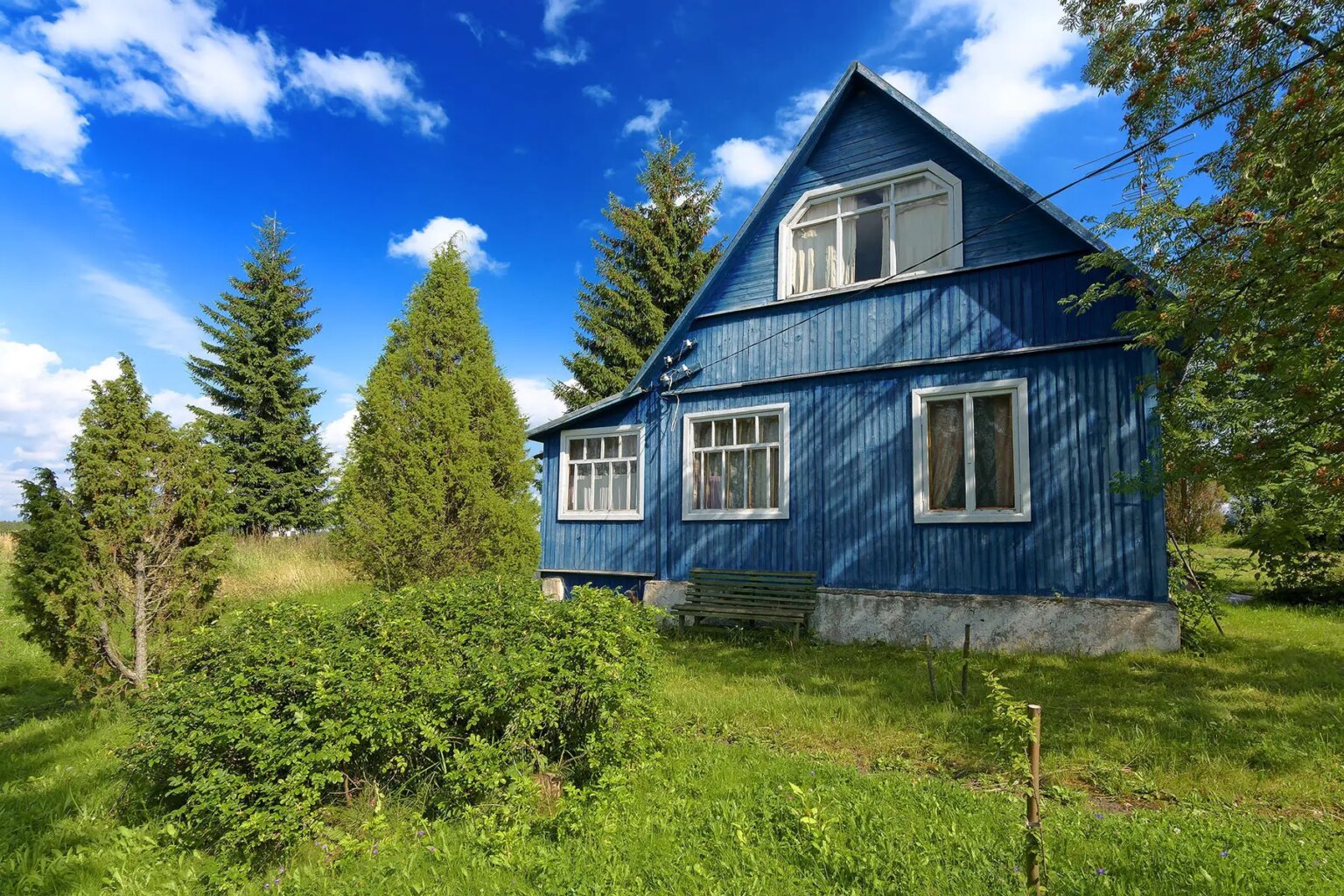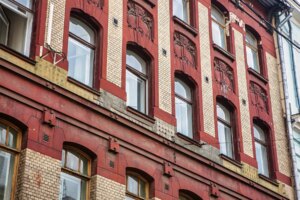Important notice from the Editor in Chief
Maintaining our Russian site is a delicate matter during the war. We have chosen to keep its content online to help our readers, but we cannot ensure that it is accurate and up to date. Our team endeavors to strike the right balance between giving information to those who need it, and respecting the gravity of the situation.
If you want to buy a home in Russia, different mortgage options apply depending on whether you’re a resident or non-resident.
The Russian mortgage industry is still relatively young. Many variations exist depending on which Russian bank or mortgage lender you’re dealing with.
This guide explains the process of getting a mortgage in Russia, how much you can borrow, interest rates, mortgage calculators, and the costs.
Mortgages in Russia
House prices in Russia have been on a continuous rise over the past few years. According to the Russian Federal State Statistics Services (Rosstat), the year-on-year (YoY) increase of in value was 8.38% for resale apartments and 20.22% for new builds in the third quarter of 2024.

These rises have largely been due to a government subsidized mortgage program introduced to boost the economy at the start of the COVID-19 pandemic in 2020. Low-interest mortgages were available to all residents, triggering more demand. The program recently ended, leading to higher mortgage rates and stricter eligibility conditions, although experts predict house prices will continue to grow in 2025 (albeit at a slower rate).
As of December 2024, the average mortgage rate stands at 23.03%, according to an index of over 100 lenders maintained by banki.ru.
Can you get a mortgage as a foreigner in Russia?
Foreign residents can buy property and get a mortgage in Russia if they have a valid residence permit. That said, although Russian mortgages for expats do exist, they usually come with more stringent terms and conditions. Furthermore, they will also usually have to pay higher rates and may need to provide a higher deposit.
Russia’s various subsidized mortgage schemes that have been running since 2020 are generally only available to Russian citizens.
Financial requirements for a mortgage in Russia
Requirements for a mortgage loan in Russia generally depend on factors such as the lender and the mortgage type. For example, some banks have minimum income requirements (e.g. 20,000 ₽ a month) while others do not.
Typically, you will need to provide proof of your income, residence status, and credit history to get a home loan in Russia.
Bear in mind that expat residents may need to meet higher income thresholds and more stringent financial requirements to take out a mortgage in Russia.
Mortgage rates in Russia in 2025
The average mortgage rate in Russia has risen from around 8% in 2023 to 23.03% at the end of 2024. This sharp increase has been driven by rising house prices and the increase in mortgage demand due to mortgage subsidies for Russian nationals.
Individual banks and lenders offer different rates, with some charging as high as 31% per year. The Bank of Russia has a key interest rate of 21% (April 2025).
Some groups, for instance families with young children, can still benefit from subsidized mortgages and pay reduced interest rates as low as 6%.
How much can you borrow for a Russian mortgage?
The maximum you can borrow depends on the bank’s loan-to-value (LTV) policy, but a general maximum is 80% of the sale price. Depending on the institution and type of property, maximum LTVs can range from 40% to 85%.
As in most countries, potential borrowers may also face income-based limitations. The new mortgage payments, plus other debts on worldwide assets, should not take up too much of your income. Many Russian mortgage lenders will only agree to a home loan if monthly repayments are no more than 30% of your monthly income.
Russia mortgage calculator
Owing to the relative youth of the Russian mortgage industry, many banks offering mortgages in Russia prefer potential buyers to contact them directly for a consultation and quote. This is typically available for free.
However, some Russian estate agencies have online mortgage calculators. These include:
Types of Russian mortgages
A peculiarity of Russian mortgages is that the type of mortgage varies depending on the property type. The mortgage term when purchasing an apartment or flat, for example, will differ significantly from a mortgage used to purchase a country cottage.

However, regardless of the property type, the structure for most mortgages are for principle repayment plus floating-rate interest.
There are several banks, mortgage lenders, and financial institutions that cater to foreign investors (read about banking in Russia). These include:
- Raiffeisenbank – one of the largest full-service banks in Russia
- Sberbank – a leader on the forefront of a changing Russian mortgage industry
- UniCredit Bank – a leading European commercial bank that also serves individual clients
Although the universal subsidised mortgage program in Russia ended in 2024, there are a number of targeted schemes for Russian nationals still running. These include:
- Family mortgage scheme for families with children
- IT mortgage scheme for employees of IT companies
- Rural mortgage scheme for homes in rural areas
- Far Eastern mortgage scheme for Russia’s eastern and Arctic regions
How to apply for a mortgage in Russia
Another peculiarity of Russian mortgages is the freedom of the borrower to choose which denominating currency to use. You can select from Russian rubles, US dollars, or euros.
The currency isn’t the only thing that could affect the terms of your loan. Your felt cost of the mortgage is the effect of the prevailing foreign exchange rate and the currency in which you earn your income.
Thus, an initial step in applying for your Russian mortgage is to gain at least a passing familiarity with foreign exchange rates.
From a technical perspective, mortgages and the application process are generally the same across different markets.
The Russian market, however, seems to be far more geared toward a consultative application process. This is in contrast to the multiple-choice process of selecting various products commonly offered in other European countries.
Thus, prospective borrowers can prepare for a consultation with their lender on terms appropriate to their situation rather than fitting into a particular product.
Documents needed for the mortgage application
As the buyer pays registration fees, one step before seeking a Russian mortgage is to get a taxpayer identification number. This number associates the individual with tax payments, of course. It also applies to all duties, dues, and other payments to any government service.
Most banks can respond to a mortgage application in one business week or less. It isn’t necessary to start the application process before reviewing potential properties.
When you are ready to secure your mortgage, you’ll need certain documents, such as:
- photo ID (such as a passport)
- property title documents
- a statement from the Urban Registration Office documenting that the property is free from encumbrances, has no limitations on disposal, and the floor plan
- executed purchase agreement
- a description of the condition of the property
- proof of income
You may also need to open a Russian bank account with an amount equal to the down payment.
As there are many lending differences between Russian banks, you will also want to review with your selected institution any specific requirements they may have.
Mortgage fees and costs in Russia
Compared to other global markets, Russian mortgages are light on fees and charges. In fact, many banks have no mortgage fees, underwriting fees, or insurance requirements. On the downside, Russian interest rates are typically over 10% more than prime rates in other global markets.

Upon transferring the deed, buyers of Russian properties typically pay fees. These include the real estate agent’s fee (2–5%), the notary’s fee (0.5–1.5%), and a registration fee (up to 1%).
Taxes and tax relief on Russian mortgages
Taxes in Russia are quite simple to understand. Residents earning up to 5 million ₽ pay 13% income tax and those with an annual income above this pay 15%. Non-residents pay tax at a flat rate of 30%. There are no separate taxes on Russian mortgages, and income such as rental income or capital gains from a property sale are included in general income tax calculations.
There is a tax exemption on all property sold within a calendar year. This is up to 1 million ₽ for real estate and up to 250,000 ₽ for other property.
Property tax in Russia ranges from 0.1% to 2% per year, depending on the value of the building.
Russian residents can deduct the following expenses from their annual tax bill:
- Home improvement costs – up to a maximum of 2 million ₽
- Interest on a construction loan – up to 3 million ₽
Useful resources
- Central Bank of Russia – sets the main Russian interest rates
- Nevsky Prostor – real estate website with a Russian mortgage calculator



